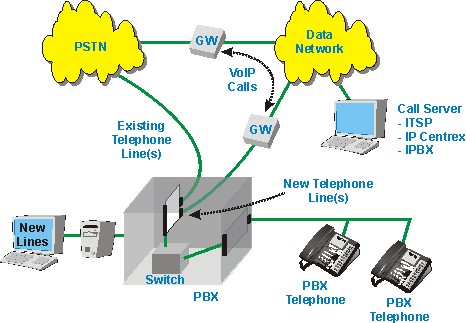
Before a Server Move, Consider all Workplace Safety Variables
October 23, 2013
Which is Better: Building or Buying a Server?
October 25, 2013Many organization are implementing an IP telephony solution. A request for protocol invites vendors to submit their proposal for such a solution.
After meeting with the short-listed vendors, the next step is to issue the RFP or Request For Proposal. If there is a network integration partner or consultant on the team, it may be best for them to handle the RFP.
A sample RFP may also be requested from the vendors to be evaluated. However, make sure that the template used is comprehensive and not tweaked for a specific vendor. Below are guidelines on how to write the RFP.
RFP: From Concept to Paper
The RFP team needs to include an IT representative, a budget consultant or specialist, and senior executives of the departments or teams that will be extensively using the technology. The team must be briefed about the IP telephony project. All team members must understand the new capabilities the solution will offer so they can put up a detailed and extensive list of features that will make the solution more productive.
1) A project leader must be selected from the team. It is best that the leader chosen is experienced in IP telephony and networking. This is so the leader can answer specific questions about the vendor solutions or even just related basic technical questions.
2) Assess what the company needs from the IP telephony solution.
– Assess the current situation including the current network and potential costs.
– Identify the main goals of the project.
– Review the most common product features then decide the importance of them to the company.
– Determine if user training will be required.
– Draw up an estimate cost of the project.
3) Document all goals and requirements for a tentative plan.
4) Present the tentative plan to the appropriate leaders in the company and solicit their input before drafting the proposal.
5) Draft the proposal that contains the following:
– An overview or summary of the proposal.
– A statement of the reasons the company needs the new IP technology solution. Write this part as detailed and clear as possible. Do not leave out obvious features and capabilities. Any weakness or anything missing with the current solution should also be included.
– A ranking of all the features and capabilities that should be included in the solution. This ranking must be weighted. It is best to be very specific and detailed in the features and capabilities list and avoid terms that may be construed in different ways. Define words that could be misunderstood if necessary. Again, do not assume and leave out the obvious. Include all and every capability that is needed by the company.
– A detailed description of the project implementation and evaluation.
Include information about the company and the goals of the company pertaining to technology.
– Provide a project schedule. Clearly indicate the date or at least an estimate of the period when the company wants the new solution installed. Details such as how you want the solution to be implemented.
The approximate budget for the project.
– Conclude with open-ended questions for the vendors for issues like the vendors approach to training, the venue and length of training, response time for support calls, system upgrades, maintenance fees, the vendors company history and information such as employee count, customer references, and if they can refer you to their customers for contact.
6) Submit the proposal to the short-listed vendors.
Tanya Williams helps companies understand and adopt new technologies in all aspects of their operations. She is currently working on new communication technologies that are promising a paradigm shift.

